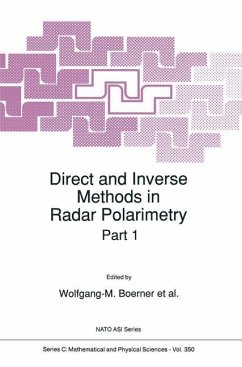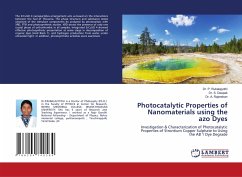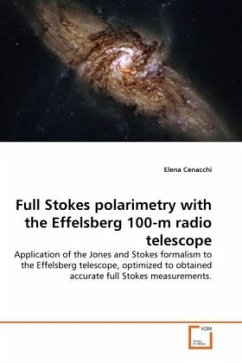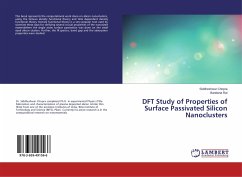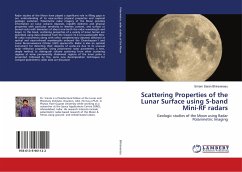
Scattering Properties of the Lunar Surface using S-band Mini-RF radars
Geologic studies of the Moon using Radar Polarimetric Imaging
Versandkostenfrei!
Versandfertig in 6-10 Tagen
47,99 €
inkl. MwSt.

PAYBACK Punkte
24 °P sammeln!
Radar studies of the Moon have played a significant role in filling gaps in our understanding of its near-surface physical properties and regional geologic evolution. Polarimetric radar imagery of the Moon provides information on lunar volcanic deposits, regolith dielectric and physical properties with particular sensitivity to ilmenite content, and surface or buried rocks with diameters of about one-tenth the radar wavelength and larger. In this book, scattering properties of a variety of lunar terrain are described using data obtained from the S-band (12.6 cm-wavelength) Mini-RF radar instru...
Radar studies of the Moon have played a significant role in filling gaps in our understanding of its near-surface physical properties and regional geologic evolution. Polarimetric radar imagery of the Moon provides information on lunar volcanic deposits, regolith dielectric and physical properties with particular sensitivity to ilmenite content, and surface or buried rocks with diameters of about one-tenth the radar wavelength and larger. In this book, scattering properties of a variety of lunar terrain are described using data obtained from the S-band (12.6 cm-wavelength) Mini-RF radar instruments along with other complimentary datasets obtained at optical and near-infrared wavelengths onboard the Chandrayaan-1 and Lunar Reconnaissance Orbiter (LRO) spacecrafts. Radar is also an optimal instrument for detecting thick deposits of water-ice due to its unusual radar reflection properties. Using polarimetric radar parameters, a new, simple method to distinguish volume scattering from other scattering regimes at some permanently shadowed regions of the lunar poles is presented. Followed by this, some new decomposition techniques for compact-polarimetric radar data are discussed.



